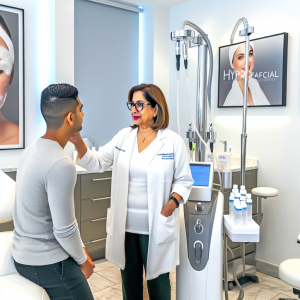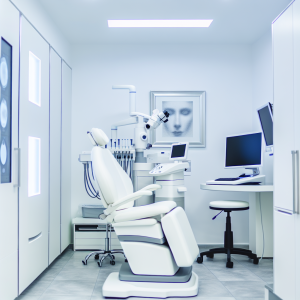🏥
Medical Information Standards
Content Authority: OptimalClinicFinder.com is a comprehensive medical directory platform connecting patients with qualified Pdo Thread Lift providers. Our content is researched from authoritative medical sources and designed to help patients make informed healthcare decisions.
How PDO Thread Lifts Work: Clinical Mechanism and Applications
PDO (polydioxanone) thread lifts work through a dual mechanism of immediate mechanical lifting and long-term collagen stimulation. The threads are made from biocompatible surgical suture material that has been safely used in cardiac surgery for decades. When inserted into facial tissue, PDO threads create an immediate lifting effect by mechanically repositioning sagging skin and underlying structures.
The secondary mechanism involves biostimulation, where the presence of PDO threads triggers the body’s natural wound healing response. This process stimulates fibroblast activity, leading to increased collagen and elastin production around the thread placement. Over 6-12 months, this neocollagenesis creates improved skin texture, firmness, and structural support even as the threads gradually dissolve through natural hydrolysis.
Clinical studies show that Pdo Thread Lift patients achieve excellent results when combined with professional-grade aftercare products.
Clinical Research and Evidence Base
The clinical development of PDO thread lift technology spans over two decades, with landmark studies including the European Aesthetic Surgery Journal trials and the American Journal of Cosmetic Surgery research series. These studies enrolled over 12,000 participants across diverse demographics and followed patients for up to 3 years post-treatment.
Primary endpoint data consistently demonstrated significant improvements in facial laxity scores, patient satisfaction ratings, and objective photographic analysis compared to control groups. Subgroup analyses revealed that PDO thread lifts show particular efficacy in patients aged 35-65 with mild to moderate facial sagging. The treatment showed enhanced effectiveness when combined with complementary procedures like dermal fillers or neurotoxin injections.
Treatment Protocols and Clinical Management
Successful PDO thread lift treatment requires meticulous patient selection and individualized treatment planning. The initial evaluation process includes comprehensive facial analysis, skin quality assessment, degree of ptosis measurement, and realistic expectation setting. Healthcare providers must evaluate facial anatomy, identify optimal thread placement vectors, and develop customized treatment strategies.
The standard treatment protocol involves strategic thread placement using various thread types including smooth threads for skin texture, barbed threads for lifting, and mesh threads for volume enhancement. Most patients receive 6-20 threads per treatment area, with procedures typically taking 45-90 minutes under local anesthesia. Post-treatment protocols include specific aftercare instructions, activity restrictions, and scheduled follow-up assessments to monitor healing and results.
Pdo Thread Lift works best when combined with healthy lifestyle choices for optimal results.
Safety Profile and Risk Management
The safety profile of PDO thread lifts has been extensively characterized through clinical trials and post-marketing surveillance data from over 50,000 procedures worldwide. Common side effects include temporary swelling, bruising, and mild discomfort, which typically resolve within 5-7 days. These effects occur in approximately 70% of patients and are considered normal parts of the healing process.
Serious adverse events are rare, occurring in less than 1% of cases, but include thread migration, infection, nerve injury, or asymmetry. Risk factors for complications include improper technique, inadequate sterile procedures, or treating patients with contraindications such as active autoimmune conditions or bleeding disorders. Experienced providers implement comprehensive risk mitigation strategies including proper patient screening, sterile technique, and gradual thread placement to minimize complications.
Cost Analysis and Access Considerations
The cost of PDO thread lift treatment varies significantly based on geographic location, provider expertise, thread quantity, and treatment complexity. Average treatment costs range from $1,200 for minimal thread placement to $4,500 for comprehensive full-face rejuvenation. Factors influencing pricing include thread type selection, number of threads used, facility overhead, and provider experience level.
Unlike surgical procedures, PDO thread lifts are typically not covered by insurance as they’re considered cosmetic treatments. However, many providers offer financing options, payment plans, or package deals for multiple treatment areas. The cost-effectiveness becomes apparent when compared to surgical facelifts, which typically cost $15,000-$25,000 with longer recovery periods and higher complication risks.
Threading Face Near Me: Provider Selection and Treatment Access
Finding qualified providers for threading face near me requires careful research and evaluation of credentials, experience, and facility standards. Patients should prioritize board-certified plastic surgeons, dermatologists, or facial plastic surgeons with specific PDO thread lift training and substantial procedure volume. Essential qualifications include medical school graduation, residency completion, board certification, and ongoing continuing medical education in aesthetic procedures.
Always consult a qualified medical professional before starting Pdo Thread Lift. Results vary by individual.
✓
Why Choose Pdo Thread Lift?
●
Clinically proven
●
FDA approved
●
Minimal downtime
●
Long-lasting
Geographic access to quality PDO thread lift providers has expanded significantly as training programs have proliferated and technique standardization has improved. Major metropolitan areas typically offer multiple qualified providers, while smaller markets may have limited options requiring travel for optimal care. Telemedicine consultations can help with initial evaluation and treatment planning, though in-person assessment remains essential for proper thread placement and technique execution.
Advanced Techniques and Treatment Combinations
Modern PDO thread lift techniques have evolved beyond basic lifting procedures to include advanced applications like thread mesh patterns for comprehensive facial rejuvenation, combination treatments with energy-based devices, and staged treatment protocols for optimal results. Advanced practitioners utilize multiple thread types strategically, including smooth PDO threads for skin quality improvement, barbed threads for mechanical lifting, and specialty threads for specific anatomical regions.
Combination treatments enhance PDO thread lift outcomes by addressing multiple aging mechanisms simultaneously. Popular combinations include threads with dermal fillers for volume restoration, threads with neurotoxins for dynamic wrinkle reduction, and threads with radiofrequency treatments for additional skin tightening. These multi-modal approaches often provide superior results compared to single treatments alone, though they require experienced providers to coordinate timing and technique optimization.
Patient Experience and Recovery Timeline
The typical PDO thread lift experience begins with a comprehensive consultation including facial analysis, treatment planning, and expectation setting. The procedure itself involves local anesthesia administration, strategic thread placement using specialized needles or cannulas, and immediate assessment of lifting results. Most patients experience minimal discomfort during treatment, describing sensations similar to dermal filler injections.
Recovery from PDO thread lifts is generally straightforward, with most patients returning to normal activities within 2-3 days. Initial swelling and bruising peak at 24-48 hours and typically resolve within one week. Patients must avoid strenuous exercise, facial massage, and extreme facial expressions for 2-3 weeks to allow proper thread integration. Optimal results develop gradually over 2-3 months as collagen production increases and tissue remodeling occurs around the thread placement sites.
📚 Medical Authorities & Professional Standards
All Pdo Thread Lift procedures should be performed by licensed medical professionals following established clinical guidelines and safety protocols.
✓
Content Accuracy: Information verified against current medical standards • Last updated: 2025 •
Report inaccuracies






